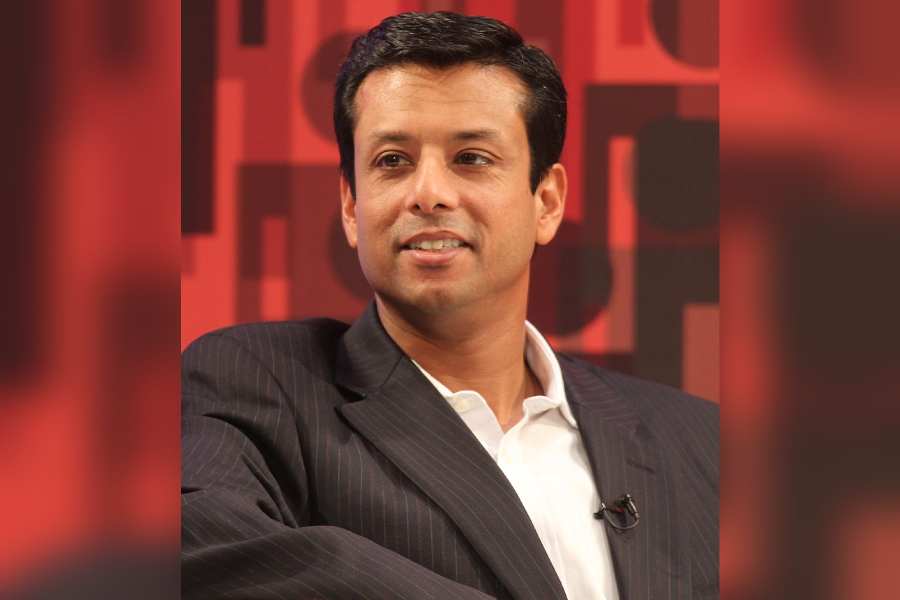New tools like ChatGPT have generated a huge amount of interest in artificial intelligence in the past few months. But AI-powered technology has already been playing a growing role in our lives and economies for some time.
And while there are concerns about the potential downsides — that it could lead to job losses, project bias or be misused — AI has also been touted as a powerful tool to help tackle global crises, such as climate change.
It's difficult to accurately state how big a difference this rapidly improving technology can make in bringing down emissions, something that needs to happen to prevent runaway global heating. However, one study commissioned by tech giant Microsoft estimated that AI applications in the sectors of agriculture, water, energy and transport could lead to a 4% cut in greenhouse gas emissions by 2030 — equivalent to the annual emissions of Australia, Canada and Japan combined.
AI is indeed a valuable tool, says David Rolnick, assistant professor in the school of computer science at McGill University, Canada, and co-founder of the nonprofit Climate Change AI. But he stresses that "AI is not some kind of silver bullet, nor is it more valuable than other classical tools for climate action."
Here are six ways it's being put to use to help the environment:
Saving trees with AI 'guardians'
Deforestation and land use changes cause more than 10% of global greenhouse gas emissions. Trees absorb carbon dioxide and store it for long periods of time, and when they're cut down, much of that CO2 escapes into the atmosphere.
To curb illegal land clearing, the nonprofit Rainforest Connection attaches acoustic monitoring sensors to trees that "eavesdrop" on the surrounding forest and transmit that audio in real-time to the cloud.
The data is analyzed by a machine learning model that has been trained to recognize sounds linked to illegal logging, such as a chainsaw or truck. Alerts are then sent out to authorities on the ground.
Almost 600 of these devices, dubbed "guardians," have been installed in 35 countries, from Brazil to Indonesia, Congo to the Philippines, according to the nonprofit's website. It says they've collected more than 107 million minutes of audio data, covering more than 400,000 hectares of land.
A recent report estimated that by empowering authorities to use AI tools to preempt the destruction of rainforests, governments could save around 29 gigatons of emissions by 2030. For comparison, energy-related CO2 emissions worldwide amounted to around 37 gigatons in 2022.
Shrinking the carbon footprint of steel
Materials such as steel and cement are important components in construction. But they're also heavy CO2 emitters, making decarbonizing these industries a priority. Steel production alone accounts for around a quarter of greenhouse gas emissions from the manufacturing sector. A big part of this share comes from the mining and transportation of ingredients used in the production process.
US company Fero Labs has been working with five American steel plants and AI to reduce the amount of mined ingredients — or alloys — by up to a third. Fero Labs' AI-driven optimization software learns from historical data to recommend the minimum amount of new additional material — if any — that needs to be added.
According to a report by the Global Partnership on Artificial Intelligence, Fero Labs has prevented an estimated 450,000 tons of CO2 emissions per year by skipping the mining, smelting and transporting of these alloys. If scaled to the entire industry in the US, the report estimates annual savings of 11.9 million tons of CO2. That's equivalent to about a quarter of New York City's yearly carbon emissions.
Cutting energy waste in buildings
In Hong Kong, energy use in buildings is responsible for about 60% of the city's carbon emissions. With 7.5 million inhabitants, the finance hub is one of the most densely populated places in the world.
About a quarter of its total electricity consumption comes from heating, ventilation and air conditioning (HVAC) systems in commercial buildings.
Design firm Arup came up with an app called Neuron that uses 5G and Internet of Things sensors to gather real-time data from a building's energy management system. It then uses an algorithm to analyze this data and optimize the heating and cooling system, as well as make predictions for the building's future energy demand. According to the Global Partnership on Artificial Intelligence report, these tweaks can save 10-30% of the energy used in a typical commercial building.
Fighting poaching with algorithms
Poaching and habitat destruction caused rhino numbers to dwindle throughout the 20th century. Most species are now considered endangered and mainly survive in protected reserves or sanctuaries, but they're still targeted for their horns.
The South Africa-based company Rouxcel Technology has developed AI-enabled bracelets that fit around rhinos' ankles to help conservation teams easily locate the animals and monitor their behavior in real time.
The company's algorithms use machine learning to spot when an animal is exhibiting abnormal movement patterns — a signal that it might be distressed, for example, if poachers are close. It then sends an alert to wildlife operations centers and anti-poaching teams. The devices are being used at different sites from Kenya down to South Africa.
Smart farming
Agriculture is vulnerable to climate change, with unpredictable temperatures, more frequent extreme weather events and invasive pests all posing a risk to crop yields.
At the same time, the farming sector itself contributes to the problem — agriculture, forestry and land use account for around 18% of global CO2 emissions. And then there's the fact that agriculture irrigation is responsible for 70% of water use worldwide. Fertilizer and pesticides used on fields can also end up in groundwater and nearby rivers.
Germany-based startup Agvolution has developed an AI system that draws on data from solar-powered sensors monitoring the microclimate around crops. The devices measure temperature, humidity, radiation and soil moisture in the field, while algorithms use these insights to make precise recommendations about plant health and exactly how much water and fertilizer to use. This can both boost yields and reduce wasted resources. The company says this can increase ecological and economic efficiency by up to 40%.
Here comes the sun: Using computers to plot clouds
Ramping up renewable energy is a crucial step in transitioning away from fossil fuels. But with clean energy sources such as solar making up a bigger share of the energy mix, ensuring power grids are stable becomes more tricky.
When clouds move over solar panels, the power supply can suddenly drop off. That's a problem for network operators who are trying to balance the grid and prevent blackouts. To fill any gaps, they need to have generation reserves running in the background that can quickly be ramped up when there's risk of a power shortage. And these reserves usually come from fossil fuels.
Nonprofit Open Climate Fix has teamed up with the UK's National Grid and uses AI to provide a precise picture of how clouds develop — the goal being to reduce the reliance on fossil-powered reserves.
Open Climate Fix is also piloting its forecasting models in two countries in southern Europe, and is in talks to run a pilot in Asia.











